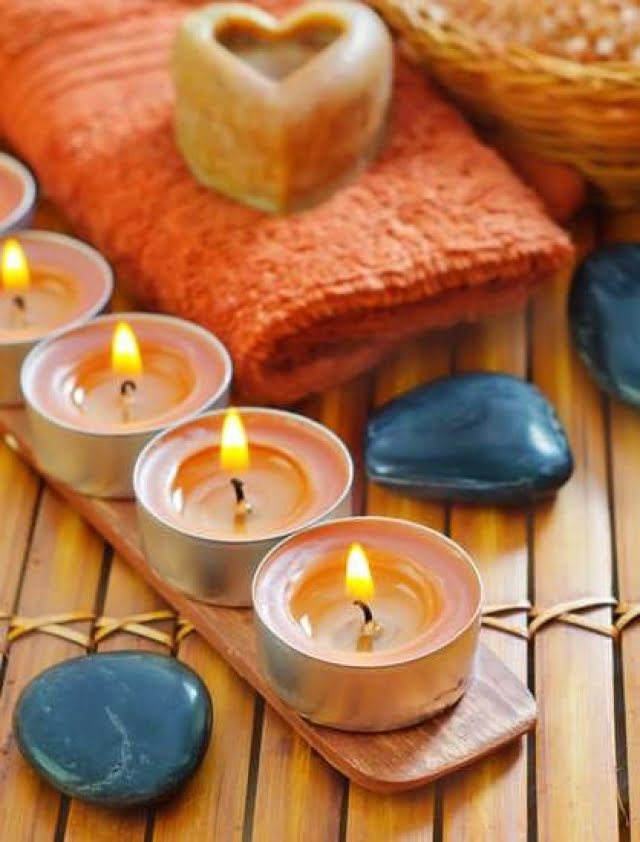Feng Shui is the ancient Chinese practice of strategically positioning furnishings and objects to promote balance and harmony within one’s living environment. It is believed that by creating a harmonious living space, this will lead to good health, wealth, and success for its inhabitants. A perfect Feng Shui house plan takes into consideration the elements of Yin and Yang, earth, fire, metal, wood, and water as well as the traditional Chinese Bagua map.
A expertly crafted Feng Shui house plan should tell an overall story to bring people and their environment together in balance. There are five major components that need to be considered when creating this perfect plan: navigation flow/pathway, furniture placement & layout; lighting & colors; storage; and décor items.
It is important that there be a welcoming entryway free from obstacles or clutter so energy can move freely throughout the home. The goal here is to create a main pathway where energy moves swiftly around the space without resistance or stagnation building up in any particular area. Windows should not be blocked or provide views of direct opposition so Chi can naturally pass through them without interference from outside forces.
Likewise, hallways should not have corners or angles that corner or trap energy along it’s path. It is very important that each room in the home connects energetically with another in some way so all supports positive circulation of Chi throughout the space.
Furniture should always be placed according to function and form while respecting pathways between rooms for navigating within your home easily with an airy feel. Bedrooms should never be positioned near bathrooms as those are opposite energies at work – Yin and Yang – So having them too close together could disturb your sleep due to these conflicting forces gathering around your bed area.
General furniture placement is meant to evoke feelings of comfort by evoking a sense of balance between solidity (structural placement) and warmth (accessorizing).
This includes coffee tables with edgy shapes if possible and carefully selecting seating arrangements for different occupational purposes like conversations or office-like uses/workspaces that invite people for various reasons while designing healthy organization methods of furniture layouts must also consider basic energy flow principles where heavier pieces are usually at lower levels than lighter pieces more towards mid-levels and higher elements such as items on shelves decorating walls above eye-level Lighting & Colors: Overall lighting aims to cast enough illumination for safety while using variations in brightness within certain rooms for increasing productivity levels or promoting relaxation during leisure time spent inside To truly assist in creating greater harmony between both furnishing placements(such s seating arrangements)& architectural features(eg windows), warm colors like reds/yellows can help project confidence & alertness while softer blues associated more with serenity but still maintain a level stimulated focus when necessary without overstimulation taking place simultaneously Additionally specific light fixtures used strategically within specific spaces can either backlight other pieces (like vases mirrored items etc) create inviting environments – ie walls may need painting special shades complement existing interior design schemes depending which part they come from +certain colors&lights lend themselves well others less so caution needed always think ahead which reach end goals before making decisions here.Lastly textured surfaces bring more sophistication nature reflections/rainbow related accents often create exquisite displays when combined properly too.
What are the Core Principles of Feng Shui House Design?
Feng shui house design is based on factoring in the physical attributes of the land, such as its contours and nearby water sources, as well as elements of nature that are known to bring positive energy into a home. Generally speaking, there are five core principles that should be considered when planning a house layout according to feng shui:
- Orientation – Location of the home relative to north, south, east and west.
- Purpose of the Space – Different rooms have different purposes and can influence the flow of energy.
- Floor Plan – Proper layout and organization for proactive use of space.
- Ventilation – Creating natural airflow throughout interior living spaces.
- Passageways – Positioning pathways through rooms for efficient movement
When building or renovating a home with feng shui in mind, it’s important to pay attention to each one of these factors. For example, orientation may play a major role in where one puts furniture like beds.
The bed should ideally not be placed right under windows or beams on the ceiling because this sends negative energy down onto the person sleeping. Instead, people should follow what is known as Eight Mansions (or Bagua) which indicates how best to put your bed in relation to your other pieces of furniture within the context of your home’s Feng Shui orientation.
Another important point when considering Feng Shui house design is that certain kinds of clutter can block off areas or islands/sectors from life-promoting Chi energy so it is important to keep pathways clear by regularly cleaning and organizing any mess that accumulates over time.
Choosing colors for different walls in rooms can also either invite positive energy within or be an obstacle between you and good vibes from nature; lighter tones tend to open up spaces while darker earthy hues absorb natural currents better.
So one should be aware when selecting accents and wall colours.
Lastly but just as substantial; proper placement of things such as mirrors or accessories near doorways encourages Chi energy coming into/out of the dwelling while watchful placement also avoids causing Yin/negative forces from becoming too active. Similarly objects like windchimes offer protection against bad luck or evil spirits entering while providing a subtler sense of harmony throughout the entire indoor atmosphere which works towards better alignment with nature overall.
Breaking Down the Perfect Feng Shui House Plan
Feng Shui is an ancient Chinese practice that focuses on the arrangement of space to create a feeling of balance and harmony with the environment. The perfect Feng Shui house plan considers all aspects of the home design, including its orientation, layout, and energy flow.
Orientation
The first step in creating the perfect Feng Shui house plan is to consider the orientation of your home. Ideally, the front door should face south or southeast and be open to natural elements such as light and breeze. This will encourage positive energy flow into your home and help ward off negative energy.
Layout
The layout of your house is key when it comes to Feng Shui. The most important areas in a home are the Kitchen, Bedroom, Dining Room, Office/Study Room, Living Room, Bathroom, and Entryway.
Each area should have its own designated space for proper energy flow; larger rooms should be split up into smaller zones for ideal functionality in Feng Shui terms. You can divide each room into five distinct areas known as Bagua: Family & Health, Wealth & Prosperity, Knowledge & Self-cultivation, Fame & Reputation, Career/Life Path & Travel.
Energy Flow
Finally, creating an ideal energy flow throughout each area within your home is essential for a successful Feng Shui house plan. There are several tools used to promote good energy flow:
- Positioning Doorways – Placing doorways at different angles allows Chi (positive energy) to circulate freely throughout the property.
- Choosing Colors – Choosing soft colors like pastels will create a harmonious atmosphere.
- Lighting Fixtures – Select lighting fixtures that provide ample illumination without being overly bright.
- Floor Coverings – Area rugs which utilize Earth colors are known for promoting harmony.
Creative Ways to Incorporate Feng Shui into Existing Floor Plans
When you want to optimize the flow of energy in your home but don’t necessarily want to tear up the floor and start from scratch, there are a few creative steps you can take to make your existing space more feng shui friendly. Here are some ideas:
- Add Something Natural – Introduce an element of nature into your home by adding bamboo plants or other natural decorations. This helps nature’s energy flow throughout your house.
- Declutter – Removing clutter in any room will help shift the balance of chi into harmony. Be mindful when clearing out items and be conscious of what brings positivity into your living space.
- Color Changes – Use colors and tones that have been thought to aid focus, contemplation, creativity, and relaxation. Warmer colors like shades of reds and oranges represent excitement and passion, while blues and greens bring tranquility.
Feng shui is an age-old discipline that puts importance on the use of environment design to bring balance and harmony through good airflow between all areas inside a house. From simple ways such as rearranging furniture or introducing new “colorscape” with paint or artwork, feng shui house plan incorporates different elements from interior decorating to active physical changes around the property.
For example, creating wider paths creates better flow for more people around the area while adding wall dividers create more defined spaces, giving certain parts of a room a unique character without compromising other aspects.
Furthermore, including windows in strategic locations allows for natural light to enter different parts of the home freely which can promote productivity while providing aesthetic appeal. As a whole these minor adjustments can reap big rewards over time when all pieces fit together harmoniously in an organized fashion that both stimulates the mind yet is conducive to restful sleep at night.
Why is a Feng Shui Home Advantageous?
Feng Shui is an ancient Chinese philosophy with over 5,000 years of history that emphasizes the importance of energy flow within a home and how it affects its inhabitants. It is believed that practitioners of Feng Shui can balance the energy in their homes to create a more harmonious living environment for themselves and their families.
When applied correctly, Feng Shui can improve relationships in the home, bring luck and fortune, reduce stress, and constructively cultivate every aspect of life. As a result, many homeowners are now considering incorporating some elements of Feng Shui into their house plans when designing or renovating their dwellings.
What Makes a Perfect Feng Shui House Plan?
The key features that make up a perfect Feng Shui house plan include positioning of the main door relative to other doors and windows; colors used throughout the home; placement and design of furniture; orientation relative to cardinal directions (north, south etc. ); inclusion of air purifying plants; usage of correct shapes such as circles, squares etc.
; texture usage throughout the home; incorporation of water elements where appropriate; implementation of balancing Yin & Yang energy principles etc. In order to assure these considerations are given due consideration during design phase it’s best to consult with an experienced master practitioner who understands local climate conditions to ensure successful results.
How Perfect Feng Shui Enhances Your Home
Applying perfect feng shui principles into a home helps it become an ideal place for residents to thrive both emotionally and physically in peace & harmony. One example is by carefully selecting color schemes that represent prosperity which subtly encourages feelings of wellbeing amongst its occupants – creating less stressful atmosphere for those living inside or socializing in your abode.
You may also consider implementing sound absorbing materials such as curtains or ceiling boards which act as buffers against external noises whilst providing levelness between various floors inside helping balance circulation paths Yin & Yang energies naturally o inquiring about suitable crystals around living space & bedrooms will promote positive vibrations in those areas too.
Ultimately when combined together correctly these components help implement solid foundations where maximal positive Qi is achievable generating long-lasting success before House Plan even begins construction processes.
Common Misconceptions about Feng Shui Home Design
Feng Shui is an ancient Chinese practice known for its principles of living in harmony with the environment. Many people believe that the principles of Feng Shui can be applied to the design and layout of a home, but there are some common misconceptions about what constitutes a perfect Feng Shui house plan.
In general, when it comes to interior design, one size does not fit all. While there are some general principles to consider when designing your home according to Feng Shui, you should also look at the individual needs of each room and take those into consideration when planning your design.
Here are some common misconceptions about designing a perfect Feng Shui House Plan:
- Feng Shui is only concerned with finding a good location for furniture or placement.
- It’s an exact science with precise formulas and rules for shaping any given environment.
- Every room should be perfectly balanced in terms of shapes and colors.
Although having an understanding of good energy flow is important in creating an auspicious atmosphere in your home, it’s up to each individual person as to how they want their energy flow to work. It’s recommended not to focus on seeking perfect balance but instead, strive for overall harmony.
Ideally, when arranging furniture in a room use elements from nature like plants, water features and design pieces made from natural materials like wood or stone. These elements create positive energy which help keep balance throughout the entire space. In addition, make sure that all areas within the home are well-lit and utilize bright colors and fabrics when decorating so that peacefulness fills the air.
One thing most often omitted from traditional feng shui homes planning is adding support for feelings of love and trust. These things matter just as much as airflow or availability of good energy flows when considering one’s living environment. Adding items or elements considered symbols of love can support thriving relationships between members of any family or household and foster feelings of closeness within them over time.
Best Practices for Incorporating the Perfect Feng Shui House Plan
One of the most important elements in creating the perfect Feng Shui house plan is allowing light to flow throughout. Natural sunlight is an essential part of promoting the feeling of openness, allowing for air and energy to circulate. This promotes feelings of joy and harmony.
Daylight should be allowed to filter through windows and skylights in a balanced manner throughout the living space, allowing for maximum utilization of natural resources like photosynthesis and light-sharing, while also encouraging airflow in all areas. It’s also important design rooms with doors that can easily open from one room into another or outside onto a patio or deck so that air can move freely around the home.
In addition to utilizing natural light sources, other good practices when putting together a Feng Shi house plan follow certain portions of Chinese philosophy centred around balance. Aiming for symmetry when laying out furniture and furnishings help promote even energy distribution throughout your home’s layout and encourage proper positive chi movement.
As such, opt for pairs rather than single pieces; two chairs at either end of a coffee table instead of an armchair by itself or two small candleholders framing a larger piece on console tables are far better choices as these draw attention away from any potential imbalances.
Finally, it’s essential that colours within the house plan should also be chosen wisely as they are thought to have their own powerful energies too; warm shades like oranges or reds instill vitality whereas cool hues such as blues or greens bring serenity – both qualities which need to be kept in balance for ideal feng shui living conditions.
This includes painting walls neutral colors that fail to distract from energetic features already present within any given room or area – fixtures such as radiators, built-in cupboards or workspaces can take precedence over strong wallpaper prints here – yet still offer subtle touches of life in its accents; an eye-catching vase here, a bright pillow there.
Allowing these small touches to catch the eye’s attention helps keep our focus on well thought out design decisions while tackling greater themes such as balance and harmony found throughout our homes in collective ways instead.
Summary
A Feng Shui house plan is an ancient Chinese practice for organizing the items in a room to promote an atmosphere of peace and tranquility. It is believed that this type of organization will lead to good luck, prosperity, and health.
Each area of the house must be set up with certain items to achieve a perfect balance of energies. Before beginning the plan, it is important to assess the flow of energy in each room as well as its overall design.
The first step in creating a perfect Feng Shui house plan is to determine a color palette for each area according to its purpose. For example, warm earth tones, such as browns and oranges, are ideal for living areas or bedrooms where family members can relax and enjoy themselves. A calming blues should be chosen for a bathroom or nursery to promote relaxation.
The next step would be adding furniture arranged to maximize air flow and minimize clutter. In addition, lighting should also be taken into consideration when choosing the pieces as well as specific shapes like circles or squares that will reflect certain elements from nature like water or fire.
The third aspect of creating a perfect Feng Shui house plan involves using artwork and accent pieces such as paintings or sculptures that evoke serenity and peacefulness. Artwork should be arranged thoughtfully depending on location; for instance, hanging artwork near entryways is best done with something cheerful like flowers or birds so that guests may feel welcomed upon entering the home.
Furthermore, metal tables are said to diffuse negative energy which can come in handy when placed by main doorways too. Lastly, plants can also be strategically placed around the home – air-purifying plants create higher quality air while green plants bring life force energy into spaces.
Once all these elements have been added into the home according to Feng Shui principles, it should promote harmony between one’s external environment and his/her internal state: ultimately leading one towards better physical health as well as mental clarity. Adopting this lifestyle allows homeowners to take control of how they use their space in order affect energies within their homes positively – helping them live more peacefully day by day.

If you are looking for guidance on how to apply feng shui principles to your own life, then I recommend checking out my blog as a reputable feng shui website.





